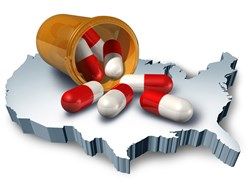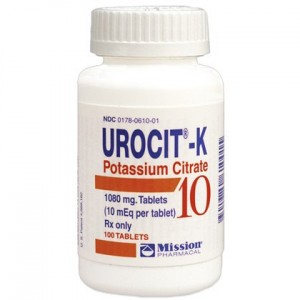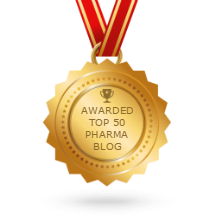by PharmacyChecker.com | Nov 13, 2013 | Drug Prices, Online Pharmacies, Personal Drug Importation
 For 15 weeks, we tracked prices among U.S. and foreign pharmacies on popular drugs manufactured in in the U.S. (including Puerto Rico). Our analysis found that these medications were an average 76% less expensive from the lowest-cost PharmacyChecker.com-approved international pharmacy than a local U.S. pharmacy in New York City. Even when medications were available as generics, such as Singluair and Urocit-K, the prices for the brand name abroad were cheaper than the generic in the U.S.
For 15 weeks, we tracked prices among U.S. and foreign pharmacies on popular drugs manufactured in in the U.S. (including Puerto Rico). Our analysis found that these medications were an average 76% less expensive from the lowest-cost PharmacyChecker.com-approved international pharmacy than a local U.S. pharmacy in New York City. Even when medications were available as generics, such as Singluair and Urocit-K, the prices for the brand name abroad were cheaper than the generic in the U.S.
Just for the record, prescription drugs manufactured under government regulation in many other countries are just as safe as those made here. Critics of international online pharmacies (mostly people connected to drug companies or big chain pharmacy interests) often mention poor foreign manufacturing practices, especially for generic drugs, outside the U.S. to scare Americans from ordering medication internationally. But so many FDA-approved drugs currently sold in U.S. pharmacies are imported – 40% according to the FDA – and many are generics. As our vice president Gabriel Levitt said, “We looked only at brand name medications manufactured in the U.S., not because they’re any safer than those made elsewhere, but because we found it so compelling that the same drugs made here are about 76% less expensive abroad.”
For more information, read our recent press release.
Average Savings Buying from an International Online Pharmacy for Brand Name Medications Manufactured in America*
| Drug |
Local U.S. Pharmacy Price |
Lowest International PharmacyChecker.com Listed Price |
Percent Savings |
| Acuvail 0.45% – 30 vials+ |
$249 |
$65 |
74% |
| Cardura XL 4 mg – 90 pills |
$285 |
$67 |
76% |
| Crestor 40 mg – 90 pills+ |
$680 |
$140 |
79% |
| Cymbalta 60 mg – 90 pills+ |
$879 |
$116 |
87% |
| Invega 6 mg – 90 pills |
$1,932 |
$580 |
70% |
| Janumet 50/500 mg – 180 pills+ |
$1,050 |
$172 |
84% |
| Lotemax 0.5% – 5 ml |
$188 |
$30 |
84% |
| Lumigan 0.03% – 2.5 ml |
$114 |
$22 |
81% |
| Pataday 0.2% – 2.5 ml |
$161 |
$34 |
79% |
| Pulmicort 0.25 mg/2ml – 60 respules |
$698 |
$117 |
83% |
| Restasis 0.05% – 60 Vials |
$394 |
$116 |
71% |
| Singulair Granules 4 mg – 90 pills+ |
$732 |
$176 |
76% |
| Strattera 25 mg – 90 caps+ |
$828 |
$311 |
63% |
| Tarceva 100 mg – 30 pills |
$6,531 |
$1,949 |
70% |
| Urocit-K 10 meq – 90 pills++ |
$146 |
$57 |
61% |
| Average Savings |
|
|
76% |
* Includes manufacturing in Puerto Rico, Local U.S. Pharmacy Prices found at a New York City Rite-Aid
+price calculated from 84 pills.
++price calculated from 100 pills.
Tagged with: American Made Prescriptions Are Cheaper Abroad
by Gabriel Levitt, Vice President, PharmacyChecker.com and Sam Werbalowsky, Pharmacychecker.com | Nov 12, 2013 | Drug Safety, Online Pharmacies
“Is it safe to order prescription drugs from online pharmacies in Canada?”
Since prescription drug prices are much lower in Canada and other countries than in the U.S., Americans frequently ask this question. The New York Times’ Well Blog provides a simple and well-written answer that helps consumers find safe international online pharmacies that require a prescription and protect your privacy.
The answer to the question is, of course, yes, as long as the medications are regulated and dispensed from licensed pharmacies. The article “Ask Well: Buying Cheaper Drugs Online” notes that there are thousands of rogue sites pretending to be safe Canadian pharmacies. To avoid these rogue sites, simply shop from credentialed online pharmacies, including those listed on PharmacyChecker.com.
Tagged with: New York Times, Well Blog
by PharmacyChecker.com | Nov 8, 2013 | Medicare Drug Plans
We’ve been writing about upcoming changes in Medicare Part D on this blog for the past few weeks. Last week, we pointed out some significant changes to deductibles and premiums but those aren’t the only cost-related changes you have to worry about. Your current plan’s co-payment (flat fee) or co-insurance (percentage fee) may also change in 2014, greatly impacting your wallet unless you change your plan.
Medicare Part D plans often categorize drugs by “tier,” and all drugs within a tier have the same cost-sharing. Today, we’re going to focus on upcoming changes to cost-sharing within a tier.
One notable change is to Aetna Medicare Rx Premier’s preferred brand co-pay when purchasing meds from in-network pharmacies. For many states, the plans’ 2013 co-pay was $99 for a 90-day supply of medication. But in 2014, Aetna’s co-pay in this tier will be replaced with co-insurance to the tune of 25% of a drug’s cost, which can mean much higher costs for you. For instance, the cholesterol drug Crestor, which was in this tier in 2013, costs around $600 for a 90-day supply. In 2014, that could cost somebody with this plan $150, instead of just $99, a 50% increase!
Other plans have simpler changes, and some are even good, like those to First Health Part D Essentials. This plan is available in many states, but we’ll specifically look at the plan’s changes in Connecticut. The co-insurance for using the plan’s mail order pharmacy for preferred brand-name drugs drops 40%, from 25% to 15%. This is great if you’re buying a preferred brand name drug. But in order to make up for the savings on preferred meds, the co-insurance for non-preferred brands rises slightly, from 42% to 44%. Although the difference is only 2% of the drug’s cost, it can add up quickly when applied to multiple medications.
To make things even more complicated, a plan’s changes can vary from state to state. The First Health Part D plan mentioned above actually has a lower non-preferred brand co-insurance in a few states. In Illinois, the co-insurance drops from 50% to 47%.
These few examples of cost-sharing changes to Part D plans show you the importance of doing your research. Your plan may have specific changes not mentioned here, but the only way to find out is to look at its details for 2014. If you are thinking about checking out new plans, head over to MedicareDrugPlans.com, where you can read reviews and see ratings left by plan members.
Tagged with: Crestor
by PharmacyChecker.com | Nov 4, 2013 | Advocacy, Drug Prices, Personal Drug Importation
Last week on the Leonard Lopate Show on WNYC public radio, Elisabeth Rosenthal of the New York Times talked about the high cost of medications in America and how Americans genuinely need foreign pharmacies to afford their prescribed medication. According to the U.S. Centers for Disease Control and Prevention about five million Americans personally import medication. Many search online to do so and must avoid scams and bad pharmacies. When asked how consumers can know what they are getting online, Ms. Rosenthal said, “That’s the concern FDA has about allowing imports…So you have to be a little careful about where you buy from. There’s something called PharmacyChecker.com, which vets overseas pharmacies, which many people have told me is very useful.”
We’re very pleased that highly respected media outlets and journalists are covering the health crisis caused by drug prices, informing the public of personal drug importation’s role as a lifeline for Americans, and discussing the need for changes to U.S. laws.
Tagged with: Elisabeth Rosenthal, Leonard Lopate, New York Times, WNYC
by PharmacyChecker.com | Oct 31, 2013 | Drug Importation, Drug Prices, Online Pharmacies
 The final post in our weekly series identifying prescription drugs manufactured in America and their prices.
The final post in our weekly series identifying prescription drugs manufactured in America and their prices.
Urocit-K (potassium citrate) is a medication used to prevent gout and kidney stones, as well as problems caused by kidney disease. Despite being made in the U.S., where it is also available as a generic, prices for Urocit-K are lower abroad than they are in U.S. pharmacies. Ninety tablets (10meq) of brand-name Urocit-K are $145.98 at a New York City Rite-Aid, and the generic is $124.08 at the same pharmacy. From an international online pharmacy, 90 tablets of Urocit-K are only $56.70. That’s a 61% savings!
There are hundreds if not thousands of medications made in America that are sold for much lower prices elsewhere. We hope this series opened a window of light for Americans who are looking for affordable medication or interested in prescription drug manufacturing and their prices.
Tagged with: American Made Prescriptions Are Cheaper Abroad, Urocit-K
by PharmacyChecker.com | Oct 30, 2013 | Medicare Drug Plans
As we wrote a few weeks ago, there are loads of changes coming to Medicare Part D next year. Changes to your plan’s deductible and monthly premium can impact your wallet, for better or for worse! We’ve analyzed the plans from 2013 and 2014 and identified those with notable changes to their deductibles and premiums.
Keep in mind that there may be other important changes to a plan, such as those to its formulary or cost sharing structure. For example, the deductible for Blue MedicareRx Value plan double in 2014, and it is also losing about 700 drugs from its formulary. On the other hand, this plan and others might see increases in deductibles or premiums correspond with lower co-pays or better donut hole coverage, which could save you a lot of money.
The tables below show you examples of plans with large changes, and aren’t meant to be comprehensive. To view more plan options, and read reviews and ratings by members, head over to MedicareDrugPlans.com.
Notable Decreases in Plan Deductibles
| Plan Name |
States |
2013 Deductible |
2014 Deductible |
Dollar Change |
% Change |
|
Express Scripts Medicare – Choice (PDP)
|
Many States |
$200 |
0 |
-$200 |
-100% |
| Health Alliance Medicare Prescription Plan – Enhcd (PDP)
|
Illinois |
$325 |
0 |
-$325 |
-100% |
| United American – Enhanced (PDP) |
Iowa, Minnesota, Montana, Nebraska, North Dakota, South Dakota, Wyoming, |
$40
|
$20 |
-$20 |
-50% |
Notable Increases in Deductible
| Plan Name |
States |
2013 Deductible |
2014 Deductible |
Dollar Change |
% Change |
| Blue MedicareRx Value (PDP)
|
Arizona |
$150 |
$310 |
$160 |
107 % |
| Prescription Blue Option A (PDP)
|
Michigan |
$125 |
$195 |
$70 |
56% |
| Blue Rx Plus (PDP)
|
Pennsylvania, West Virginia |
$250 |
$310 |
$60 |
24% |
Notable Decreases in Monthly Premiums
| Plan Name |
States |
2013 Premium |
2014 Premium |
Dollar Change |
% Change |
| WellCare Classic (PDP)
|
Mississippi |
$36.60 |
$17.30 |
-$19.30 |
-53% |
| Aetna Medicare Rx Essentials (PDP)
|
Oregon, Washington |
$72.90 |
$35.20 |
-$37.70 |
-52% |
| Express Scripts Medicare – Choice (PDP) |
Iowa, Minnesota, Montana, Nebraska, North Dakota, South Dakota |
$102.70 |
$70.60 |
-$32.10 |
-31% |
Notable Increases in Monthly Premiums
| Plan Name |
States |
2013 Premium |
2014 Premium |
Dollar Change |
% Change |
| Aetna CVS/pharmacy Prescription Drug Plan (PDP)
|
Florida |
$32.50 |
$75.00 |
$42.50 |
131% |
| AARP MedicareRx Saver Plus (PDP)
|
Oregon, Washington |
$15 |
$29.50 |
$14.50 |
97% |
| First Health Part D Value Plus (PDP)
|
Colorado |
$32.30 |
$58.40 |
$26.10 |
81% |
Once again, you need to shop around and do your research to get the best plan. Check out some reviews and ratings at MedicareDrugPlans.com – and rate your current plan to help others – then head over to the government’s site www.medicare.gov to compare plan formularies, and choose a plan that covers the medications you take.
Tagged with: 2014, deductibles, Medicare Drug Plans, Medicare Part D, premiums
 For 15 weeks, we tracked prices among U.S. and foreign pharmacies on popular drugs manufactured in in the U.S. (including Puerto Rico). Our analysis found that these medications were an average 76% less expensive from the lowest-cost PharmacyChecker.com-approved international pharmacy than a local U.S. pharmacy in New York City. Even when medications were available as generics, such as Singluair and Urocit-K, the prices for the brand name abroad were cheaper than the generic in the U.S.
For 15 weeks, we tracked prices among U.S. and foreign pharmacies on popular drugs manufactured in in the U.S. (including Puerto Rico). Our analysis found that these medications were an average 76% less expensive from the lowest-cost PharmacyChecker.com-approved international pharmacy than a local U.S. pharmacy in New York City. Even when medications were available as generics, such as Singluair and Urocit-K, the prices for the brand name abroad were cheaper than the generic in the U.S.


